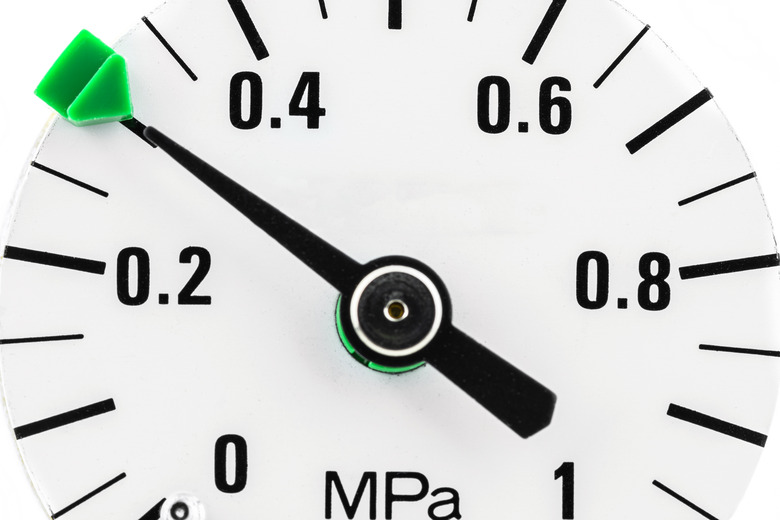How To Measure A Room's Pressure Differential
Contemporary homes are almost airtight, which is a good thing if you want to keep the home cooler in summer and warmer in winter. Because air can't enter or leave through cracks and gaps in the walls, however, the air that people breathe has to be supplied by a ventilation system, air exchanger or some other mechanical device. This raises the possibility that more air is supplied to some rooms than others, creating a pressure differential between the rooms.
The bathroom is one room in the house that should have negative pressure with respect to other rooms to make sure that steam exits through the exhaust fan and not through the door. It stands to reason that other rooms should have positive pressure with respect to the bathroom. In the rest of the house, a pressure differential between rooms can cause problems such as insufficient breathable air, poor temperature control and doors that are hard to open or close. Testing pressure differentials is a necessary prelude to balancing airflow throughout the house to correct these and other problems.
The Testing Device Pros Use
The conventional tool for measuring air pressure is a barometer, but because the pressure differential between rooms is typically very small compared to the overall room pressure, a barometer isn't sensitive enough to measure room pressure differentials. The tool used by most HVAC technicians is a digital manometer. It has a single diaphragm and two ports — one for the negative pressure side and one for the positive pressure side. You typically connect a hose to one of these ports and extend it into the adjoining room and leave the other open, and the device senses and measures the pressure difference.
Whereas you read pressure from a barometer by measuring the length of a column of mercury, a manometer uses a column of water, which is lighter and provides for more sensitive readings. Most digital manometers can switch between inches of water column (w.c.) and Pascals (Pa) — a more universal unit of pressure — but if you have one that doesn't, you can make this conversion yourself. A pressure of 250 Pa corresponds to a 1-inch w.c.
How to Measure Pressure Differential
Unlike a room's static pressure, pressure differential is always measured with respect to another room, usually the adjoining one since that's where air will flow into or out of the room in question. Before setting up the manometer, you have to make a rough determination of which room is in a negative pressure situation relative to the other one. If you suspect one room is at negative pressure, you station the manometer in that room with its negative port open, attach a hose to the positive port and extend it into the other room.
It's important to isolate the rooms from each other, otherwise, the pressure will be equalized. That means the door has to be closed, and it's important not to kink or bend the pressure hose that has to extend through the doorway. When the situation calls for it, pros make a small hole in the wall and patch it after the test is concluded.
Indications of the Need for a Test
Some of the conditions that can point to a pressure imbalance include:
- People experiencing headaches in a particular room, which can point to a lack of oxygen.
- The temperature in a particular room being habitually colder than the rest of the house, indicating that air supplied by the furnace is being sucked out.
- An entry door being difficult to open or close or slamming shut by itself.
In a sealed house, these problems are usually resolvable by adjustments of airflow through the HVAC ducts. In homes that aren't that well sealed, negative pressure conditions can be the result of heat convection currents drawing air out of the room through gaps in the walls or ceiling, They may be resolved by sealing those gaps or installing a ceiling fan to recirculate the warm air back into the room.
